(2 pm. – promoted by ek hornbeck)
Burning the Midnight Oil for Living Energy Independence
crossposted from Voices on the Square
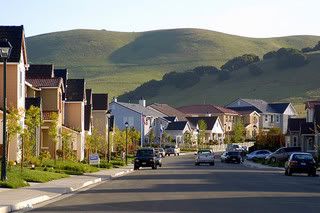 Back in April, Hope Yen was on the Huffington Post with Sprawling Suburbs Growth Falls To Historic Low Amid High Gas Prices
Back in April, Hope Yen was on the Huffington Post with Sprawling Suburbs Growth Falls To Historic Low Amid High Gas Prices
All across the U.S., residential exurbs that sprouted on the edge of metropolitan areas are seeing their growth fizzle, according to new 2011 census estimates released Thursday.
…
“The heyday of exurbs may well be behind us,” Yale University economist Robert J. Shiller said. Shiller, co-creator of a Standard & Poor’s housing index, is perhaps best known for identifying the risks of a U.S. housing bubble before it actually burst in 2006-2007. Examining the current market, he believes America is now at a turning point, shifting away from faraway suburbs to cities amid persistently high gasoline prices.
…
“Suburban housing prices may not recover in our lifetime,” Shiller said, calling the development of suburbs since 1950 “unusual,” enabled only by the rise of the automobile and the nation’s highway system.
As it was originally designed, Outer Suburbia and Exurbia was designed to fail in an era where increasing energy efficiency will be a fundamental platform for ongoing growth. However, its possible to retrofit Outer Suburbia and Exurbia to a more sustainable design.
The Design of Exurbia and Outer Suburbia
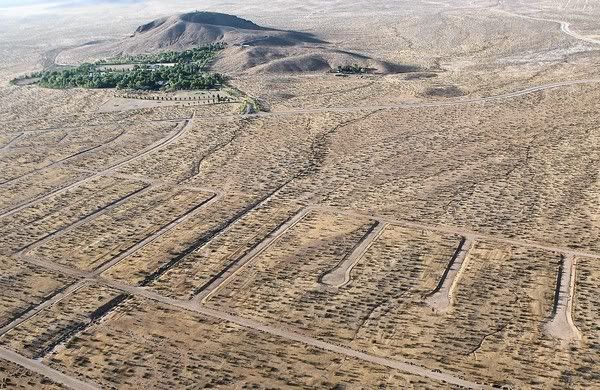 I’m not going to distinguish between Exurbs and Outer Suburbs here. Exurbs are “residential areas outside of an urban area and beyond suburbia”, like the small three street exurb in which I grew up … and that’s what I automatically think of when I say Exurb, a mix of small residential developments, with farmland on several sides, and housing along state and county highways, with farmland sitting in the middle.
I’m not going to distinguish between Exurbs and Outer Suburbs here. Exurbs are “residential areas outside of an urban area and beyond suburbia”, like the small three street exurb in which I grew up … and that’s what I automatically think of when I say Exurb, a mix of small residential developments, with farmland on several sides, and housing along state and county highways, with farmland sitting in the middle.
But after I left, Suburban Columbus spilled over the Franklin County / Licking County border, and now it is entirely arbitrary whether you wish to call the place I grew up Outer Suburban or Exurban. The sharp and clear formal distinction between an incorporated suburb and suburban housing in an unincorporated township is a difference that is harder to see on the ground, a the population of a rural township becomes dominated by suburban residential voters.
The common feature of the two is the average length of the drives. The length of the drive to get to the supermarket. The length of the drive to get to school. The length of the drive to get to the Mall. The length of the drive to get to work and school. The length of the drive to get … just about “anywhere”.
Outer Suburbia and Exurbia is the twin processes of zoning for single use and “drive until you can afford the housing” taken to their extremes. Exurbia proper may not always be single use, but when the alternative nearby use is corn and soybean fields, or a quarry, or some other rural primary resource extraction, its not an alternative nearby use that you have much reason to visit.
Writing from the Exurban area surrounding the Research Triangle, real estate agent Lynn Hayes says,
I can verify this idea that cheap gasoline made the exurbs possible. When gas prices first shot up in 2004 the market for homes in Chatham County and western Orange County dropped significantly despite the fact that elsewhere the housing boom was still raging unabated. Clients who previously were looking in these areas decided to buy homes closer to their work because of high gas prices.
…
It’s difficult to imagine that gas prices will drop, so unless the dream of public transportation in the Triangle becomes a reality the market for homes in the exurbs is likely to continue to be a challenge. There will always be people (like me) that crave the peace and solitude of wooded seclusion and who will be willing to drive a bit more and pay a bit more for that privilege. The lower property taxes of the rural areas offsets the higher gas costs anyway.
But as the market for rural housing shrinks, as long as the supply continues to expand with new developments home prices in these areas will languish and expectations of home sellers will need to comply with the new market realities.
Exurbs are where the effect is most dramatic, because the vehicle miles that you need to drive in Exurbia for so many different tasks are so dramatic, but the effect is felt across outer suburbia. And its not just transport, but also a demographic shift in the “younger generation” that are currently teenagers and Twenty-Somethings. Earlier this month, Steve Yoder wrote, for the Fiscal Times:
Also driving down demand for houses in the outer suburbs are demographic trends. Recent college graduates and young professionals are making the place they live a priority – 77 percent of them say they plan to live in an urban core even if it’s more expensive, according to a February 2010 study by real estate consultancy RCLCO. The study’s author found that more Gen-Y’ers than Gen-X’ers are willing to live in a smaller space if it means they can walk to work or shops. At the other end of the age spectrum, baby boomers are now selling their houses as they retire and are looking to live nearer urban amenities.
Property Values and Slums
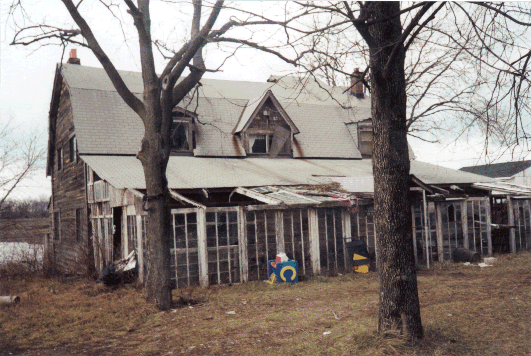 However, over the past thirty years, we built a whole lot of residences in the outer suburbs and the exurbs. Are we going to allow them to become slums?
However, over the past thirty years, we built a whole lot of residences in the outer suburbs and the exurbs. Are we going to allow them to become slums?
Remember that slums are not an intrinisically urban phenomenon. Our association of slums with the inner urban areas of large cities is a historical consequence of the same shift to the suburbs that seems to have come to an end with the end of cheap gas and the collapse of the housing bubble. However, what makes an area a slum is quite general: you get a slum when the value of the properties fall below the replacement cost.
That is the silent threat looming over Outer Suburban and Exurban properties. If property values drop below replacement cost, then the rational financial response is to find the activity with the best positive cash flow, and to extra value from the property while allowing the property to run down. Which is to say, when property values drop below replacement cost, the financially sensible thing to do for the property owner is to act as a slumlord. Of course, no every property owner wishes to become a slumlord, but as properties in an area are allowed to run down, further eroding the value of all properties in that area, there is a growing incentive to sell out to someone who is willing to be a slumlord.
Suburban Retrofit: Redesign In Place
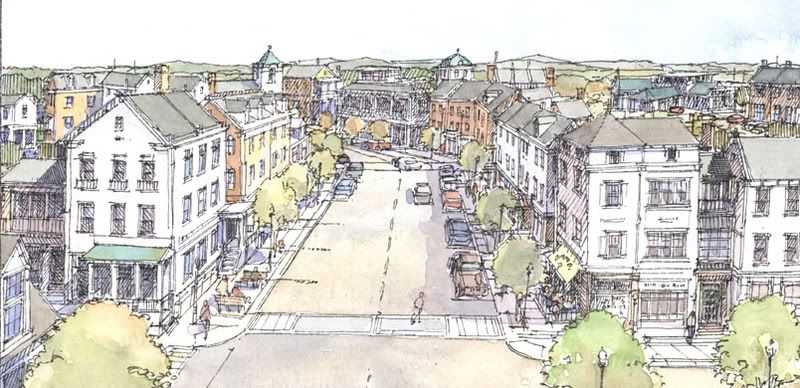 If values are sliding because of the cost of travel per mile in an area that requires a lot of miles of travel to get things done, there are two responses that can boost value:
If values are sliding because of the cost of travel per mile in an area that requires a lot of miles of travel to get things done, there are two responses that can boost value:
- Reduce the numbers of miles that need to be traveled to get things done, and
- Reduce the cost of transport per mile
Both of these goals may be pursued with the same policy response.
(1) Suppose that you had a small, multi-use “suburban village” that was in relatively easy travel distances.
(2) Suppose that the suburban village was connected by lower cost transport to additional suburban villages as well as to one or more larger urban multi-use areas.
Why, if you could manage that, you would have redesigned the transport experience of the residents of that Outer Suburban or Exurban area. Instead of a long drive to location A over here, another long drive to location B over there, and another long drive to location C out yonder, they would have a short drive to location A, to get one or several things done there, and then a lower cost trip from location A to location B or C.
Which brings up the “unless” brought up by the real estate agent on her blog: “so unless the dream of public transportation in the Triangle becomes a reality”. If you have a large area of Outer Suburban and Exurban homes, with their value under pressure because of the high cost of driving, then you do not need to find a Suburban Village location: they can be created around the stops of some common carrier transport corridor.
This is something that does not need to wait upon a change in policy in Washington DC. A state can establish a policy that encourages the establishment of suburban villages around transport corridors. What is required is an easement from zoning regulations allowing for three or four story multi-use development an eighth of a mile around a designated transport service stop, and three story multi-residence development a quarter of a mile around a designated transport stop. The multi-use zone should allow for both ground level retail and ground and/or second story professional uses, with townhouse residences above. The easement should also include a maximum allowed parking minimum, with allowance to include pooled parking in the zone to meeting parking minimums.
Since local zoning is a power derived from state powers, a state has the power to override local zoning rules. In localities where zoning rules are enforced by “owners agreements”, the easements represent a temptation to allow an exception to be granted to the owners agreement, especially as there is a clear boundary line for the exception.
It would only take a couple of successful redevelopments of mixed use Suburban Villages before property developers in other states start to lobby for similar easements to be provided for in their states.
The Transport Corridor Backbone
 There is a great deal of flexibility in what transport corridor is used as the core of this system. A conventional “commuter rail” system could be electrified and upgraded to allow for higher frequency of service. Improvements to support a 110mph “Rapid Rail” corridor could be used to also support a regional rail service into an urban area. A streetcar system in an urban area could be extended out into a “Rapid Streetcar” system, running on a dedicated corridor to more widely separated stops in the outer suburbs and exurbia. A expressway median could be converted into an express busway, supporting multiple express bus routes that leave the expressway on the Outer Suburban / Exurban side to the express stops in their service area.
There is a great deal of flexibility in what transport corridor is used as the core of this system. A conventional “commuter rail” system could be electrified and upgraded to allow for higher frequency of service. Improvements to support a 110mph “Rapid Rail” corridor could be used to also support a regional rail service into an urban area. A streetcar system in an urban area could be extended out into a “Rapid Streetcar” system, running on a dedicated corridor to more widely separated stops in the outer suburbs and exurbia. A expressway median could be converted into an express busway, supporting multiple express bus routes that leave the expressway on the Outer Suburban / Exurban side to the express stops in their service area.
Advocates of sustainable transport should push for transport corridors to rely on electric power rather than fossil fuels ~ but the key point is to establish a dedicated transport corridor. Once a dedicated transport corridor is provided, circumstances will push us toward electrification of those services.
The Suburban Villages depend upon the Transport Corridor that they share, but the Transport Corridor also depends, in part, on the Suburban Villages. The flip side of the Suburban Village easement is a capital levy on newly developed property permitted by the easement, to contribute to capital costs of the transport corridor, and an Incremental Property Tax levy of 1/5 of the property tax on property permitted by the easement for operations of transport on the corridor serving the Suburban Village.
Support Strategies
The above is the core of the Suburban Village Transport-Oriented Development strategy. There are also a number of support strategies that can be pursued to support the reorientation of Outer Suburbs and Exurbs to their own central place that is a launch pad to car-independent regional transport.
While the Suburban Village is sized to be a walkable neighborhood, there are people who will walk well over a quarter mile to get to a local store or to get to regional transport. Sidewalks and safe pedestrian crossing for a radius of a mile or more around the stop would leverage the value of proximity to the Suburban Village, and a mile radius around the suburban village has four times the area of the suburban area itself.
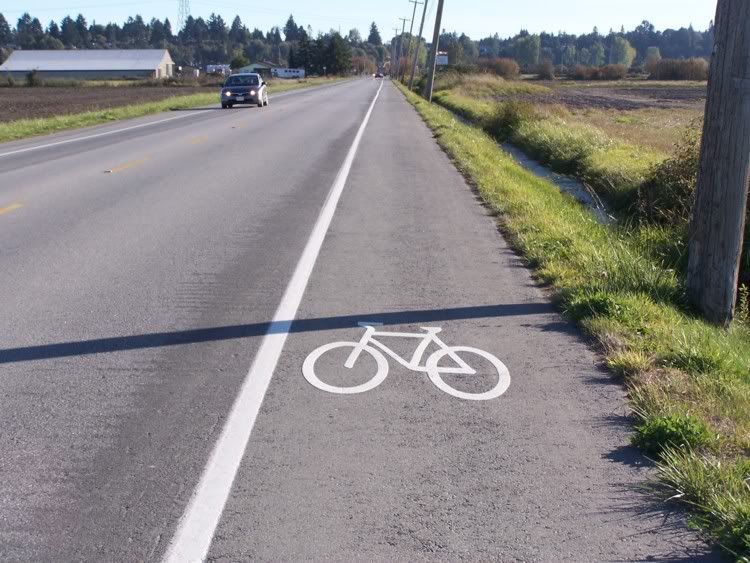 Shared cycle signage and some means for cyclists to trip “automatic” lights can extend the cycle accessibility of the Suburban Village to a radius of three to five miles, depending on terrain, so the territory in cycle reach of the Suburban Village may be 36 to 100 times the area of the Suburban Village itself. While reliance on the existing “national cycleways” of our existing public rights of way gives a universal grid, only a brave minority will venture to use 55mph to 65mph State and National Highways for transport cycling, so upgrading roads in the cycle over 45mph in the areas to include rideable shoulders will fill in what would otherwise be a hole in the cycle transport hinterland of the Suburban Village.
Shared cycle signage and some means for cyclists to trip “automatic” lights can extend the cycle accessibility of the Suburban Village to a radius of three to five miles, depending on terrain, so the territory in cycle reach of the Suburban Village may be 36 to 100 times the area of the Suburban Village itself. While reliance on the existing “national cycleways” of our existing public rights of way gives a universal grid, only a brave minority will venture to use 55mph to 65mph State and National Highways for transport cycling, so upgrading roads in the cycle over 45mph in the areas to include rideable shoulders will fill in what would otherwise be a hole in the cycle transport hinterland of the Suburban Village.
In Outer Suburbia and Exurbia, the reach of Neighborhood Electric Vehicles is more often limited by regulation than by their speed and battery capacity. In many states, neighborhood electric vehicles are limited to roads with speed limits of 30mph, 35mph or 40mph speed limits, and qualifying areas are suburban developments or small towns that have been swallowed by Outer Suburbia, forming Neighbor Electric Vehicle islands accessible only by National, State, County and/or Township highways with speed limits that put them off limit to Neighborhood Electric Vehicles. A Neighborhood Electric Vehicle access network plan can identify a grid of secondary roads, rideable shoulders and access lanes to give access to the Suburban Village for a radius of three to five miles, with the same 36 to 100 time leverage as with cycle transport.
Suburban VIllagers
So, everyone should yearn to become a suburban villager … Oh, wait, no, that’s not it.
Ah, now I remember. Urban downtowns and inner suburbs have their appeal. But it takes all kinds to make up the world, and treating that as the only and sole approach to sustainable development is putting all of our eggs into a single basket. We are better off working out sustainable urban ways of living, sustainable suburban ways of living, and sustainable rural ways of living, so that different people can find a sustainable way of life that they are most comfortable with.
There is, in addition, a political dividend to working on ways to use sustainable development to rescue outer suburban and exurban areas from a downward spiral into slums and abandoned properties. This bridges the stereotype that transport corridors other than expressways are an “urban” concern and funding transport other than cars is a concession to “urban” interests. Addressing a real need of suburbanites to cut back on their driving miles, without cutting back on the things that they can do, is something that energy-progressives can do that Big Oil, the roadworks lobby, and their well-funded cronies in the Republican, and at times Democratic, parties cannot offer. They are all-in on automobile transport, and cannot rescue property values in Outer Suburbia and Exurbia from the impact of energy prices without betraying their vested interest.
Midnight Oil ~ Dreamworld
The Breakfast Creek Hotel is up for sale
The last square mile of terra firma gavelled in the mail
So farewell to the Norfolk Island pines
No amount of make believe can help this heart of mineEnd – your dreamworld is just about to end
Fall – your dreamworld is just about to fall
Your dreamworld will fall

5 comments
Skip to comment form
Author
… Dead End Street.
I worked in Washington DC and lived in Reston, VA. At the time, Reston was only a few years old and technically just a “place”. It was a planned community by Gulf Western that included private homes, town houses, garden apartments and apartment buildings. There were wooded buffer zones between buildings for privacy and conservation. Streets were planed with walkways and crossing that separated traffic and pedestrians. Each community area had its own park, playgrounds, swimming pool and tennis courts. The center of Reston was a shopping plaza around a man-made lake. Parking was out of sight. Groceries from the Safeway were delivered to your car via a conveyor belt and there was a supervised play area for the kids. Nearly everything was in walking distance for the more densely planned areas nearest the Plaza and lake.
Reston had an industrial park and was near Dulles airport. The only draw back at the time was the lack of public transportation into DC. I imagine that has improved.